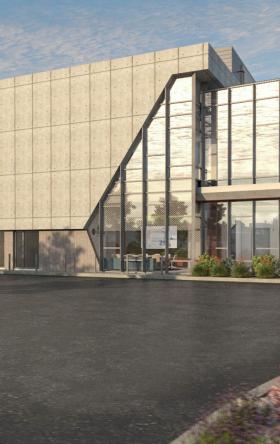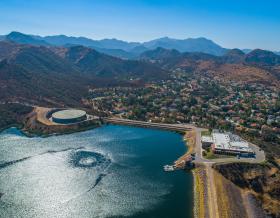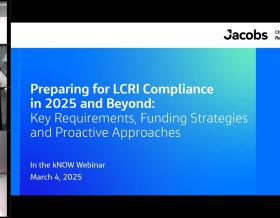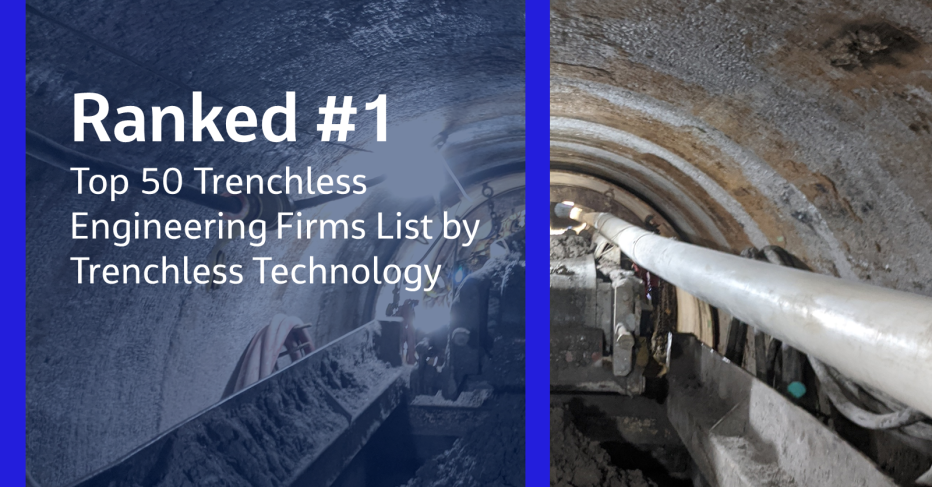
For the seventh consecutive year, we’ve earned the top spot on Trenchless Technology’s Top 50 Trenchless Engineering Firms list. But we couldn't have done it without our amazing trenchless professionals and our clients entrusting us with their critical infrastructure projects!
“It’s an honor to be recognized by Trenchless Technology again this year,” says Jacobs Global Tunnel & Ground Engineering Director Mark Johnson. “As trenchless technologies continue to evolve and improve, more of our clients will look to companies like ours to help repair or replace their aging underground infrastructure or install new buried infrastructure.”
Trenchless Technology develops their list by comparing firms based on their trenchless billings in the North American market, as well as numbers of trenchless professionals, completed trenchless projects (or subsurface construction projects requiring minimal or no continuous trenches) and a breakdown of what trenchless components made up the projects reported. Jacobs reported more than $201 million in trenchless revenue in 2020.
Trenchless Practice Responds to Climatic Changes
Jacobs’ trenchless practice is jointly led by Dan Buonadonna, Global Technology Lead (GTL) for Condition Assessment and Rehabilitation (bursting, lining, etc.) and Andrew Finney, GTL for Trenchless Engineering (for example, horizontal directional drilling, pipe jacking, tunneling). Together, they steward the practice among Jacobs’ networked community of more than 850 trenchless practitioners.
“We are grateful to be a leader in the professional community that is dedicated to helping our cities take care of aging public infrastructure during this time of unique challenges and increasing demand. Building on this recognition, Jacobs continues to invest in new solutions and technologies to help assess, prioritize, and design cost-effective and equitable solutions to maintain buried infrastructure,” says Dan Buonadonna, GTL for Pipeline Condition Assessment & Rehabilitation Services.
Andrew Finney, GTL for Trenchless Design, concurs. “The business of infrastructure repair and replacement is still as strong as ever, and our collective support for our clients has adapted to respond to the challenges posed by the pandemic. New climate challenges — such as wildfires in the west and hurricanes in the east — are driving an ever more urgent need to harden our infrastructure through undergrounding, and new opportunities related to energy have us drilling deeper and longer than in the past.”
Leveraging our networked community of trenchless practitioners means that our clients directly benefit from lessons learned from projects completed around the globe. This enables public agencies big and small to manage and extend the service life of their existing infrastructure or install new drinking water, wastewater and energy conveyance systems without disrupting their communities or the environment.
Resilience a Key Component of Trenchless Projects
Across North America, our trenchless practitioners are applying cutting edge techniques on public and private infrastructure. The US 36 Lyons to Estes Park at Milepost 8 Project for the Colorado Department of Transportation in Larimer County (near Estes Park) is one such case, receiving several awards over the past year.
Looking ahead to long term resiliency, the project was designed to respect a river’s natural morphology, putting the Little Thompson River back in its historic channel of Muggins Gulch. Tunneling the river crossing beneath the highway will reduce downstream flood risk going forward.
-

Installation of ground support prior to the start of tunneling for Little Thompson River Crossing
Continuing with the resiliency theme, work is preceding on our Cockburn and Calrossie Combined Sewer Relief Works Project for the City of Winnipeg Water and Waste Department (Manitoba, Canada) in collaboration with our local partners KGS Group, that is slowly separating the storm sewer from the sanitary sewer to reduce flooding risk using microtunneling, conventional tunneling, and other forms of trenchless installation.
-
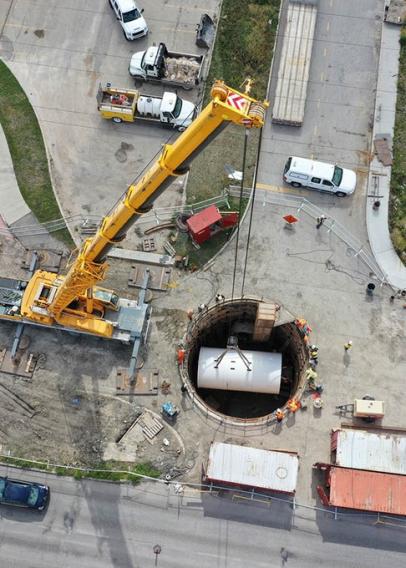
Contract 5 Tunnel Boring Machine Launch Shaft (photo courtesy of KGS Group)
Our team provided planning, detailed design, and construction services to Athens-Clarke County, Georgia as they constructed the challenging Upper North Oconee (UNO) Phase 2B Trunk Replacement Project to install a new 36-inch diameter ductile iron pipe gravity sewer. What made this project so demanding is that the installation involves depths of over 50 feet in highly abrasive gneiss bedrock and saturated sands. But it’s critical to replace this failing stretch of sewer near the banks of the North Oconee River and Athens-Clarke County’s downstream water intake. The project included a hard rock TBM tunnel, two crossings of a railroad by microtunnel for the sewer and auger boring for the storm sewer, and a pile-supported aerial crossing of the North Oconee River.
-
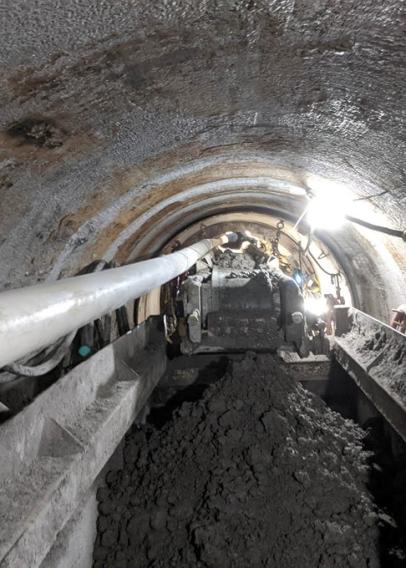
Hard Rock TBM tunneling for the UNO Phase 2B Sewer
-
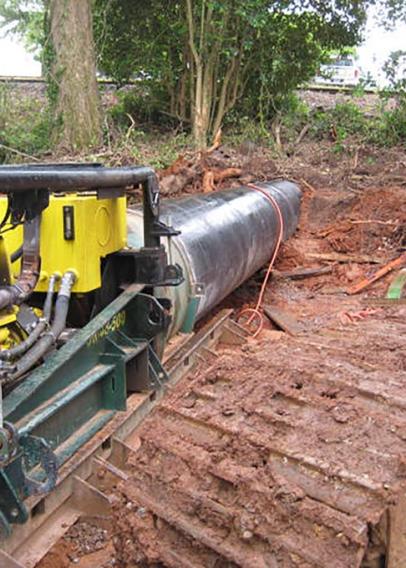
Hard Rock TBM tunneling for the UNO Phase 2B Sewer
We are honored to have received this award for seven consecutive years (and nine of the past ten years). Together with our clients, communities, employees and industry partners, Jacobs will continue to push the limits of what’s possible to make the world smarter, more connected and more sustainable.


